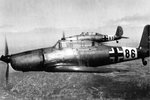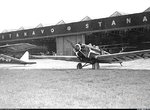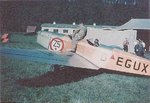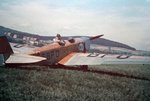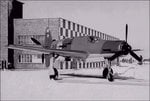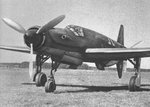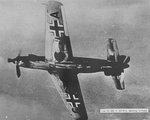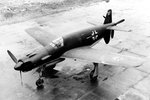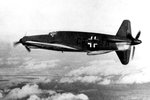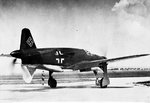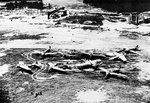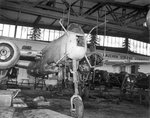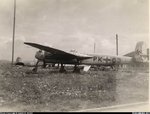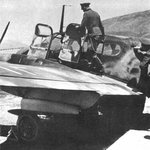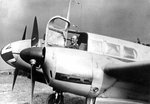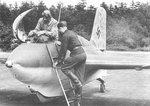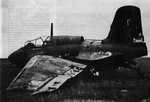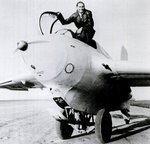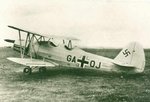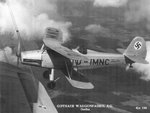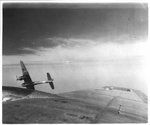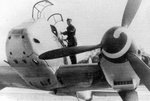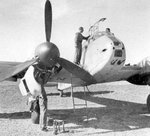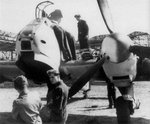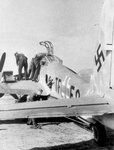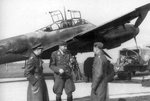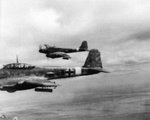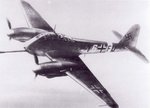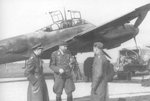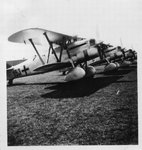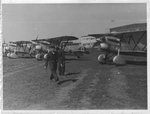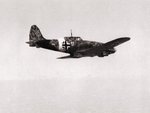The design of German World War 2 planes commenced years before the conflict. When the armistice that puts an end to the First World War is signed in November 1918, the power of the German army and aviations is still considerable. The treaty of Versailles, signed June 28, 1919, will organize a total dismantling of the enemy military power. This treaty has clauses putting an end to the existence of the military aviation in Germany. All the aeronautical equipment must be delivered to the allied powers. There still remain some 20,000 military aircraft of which 2,400 bombers, fighters and recognition airplanes. 15,000 of them and at least 27,000 airplane engines will be thus "distributed". But, the treaty does not forbid the manufacturing of civil aircraft, probably because to this era, the German civil aviation is practically nonexistent. The German authorities will seize this opportunity to begin an expansion that will first result in the creation of the Lufthansa (civilian organization), and then the Luftwaffe (the German air force). Under peaceful cover, many flying clubs and piloting schools will see the light of day. There will be no longer any obstacles for the development and the formation of crews. In 1920, the Professor Hugo Junkers creates an aeronautical construction corporation. In 1922, Ernst Heinkel launches his business on the Baltic Sea shore. In 1924, Heinrich Focke and Georg Wulf are the founders of the Focke-Wulf Flugzeugbau in Brême. Finally, Willy Messerschmitt assumes the direction of another aeronautical construction corporation. In 1926, the Deutsche Lufthansa is created, and we see the construction of large airfields and the improvement of equipment and flight instruments, to the point that the company will become, in the years that follow, the most effective airline company in Europe.
The world-wide economical crisis of the thirties will allow Hitler and his nazi party to come into office, causing many upheavals. In 1934, the mandatory military service is reestablished and the Minister of the Defense becomes the Minister of the War. Hitler becomes the undisputed leader (Furher) of Germany, when Hindenburg dies in 1934. Hermann Goering, who supported Hitler for his whole career, becomes Minister of the Air. As early as 1934, truly aircraft are produced, like the Heinkel He 51, equipped with two 7,9 mm machine guns and capable of speed of 338 km/h (211 mph). At this point in time, the German Air force is comprised of 1888 airplanes and of some 20,000 officers and soldiers. In 1935, the production reaches 200 airplanes a month, and then 300 a month in 1936. In March 1936, the Bf 109 E and the Bf 110 fighters are born, as well as the Ju 88, Do 17, Ju 87 Stuka and He 111 bombers. France and England have no idea what is going on, and they are not preparing at the same pace – far from it. During the civil War in Spain, Hitler gladly assists Franco (both are fascist regimes leaders). This conflict allows the German to test their war equipment. At first, a small squadron of He 51B fighters and about twenty Ju 52 are sent in Spain under the name of "Legion Condor". During the summer of 1937, the Legion Condor receives Messerschmitt Bf 109Bfighters and Heinkel He 111 and Dornier Do 17 bombers, and goes into attack mode. These first air fights will be the occasion to create revolutionary tactics regarding formation and strategy. Orderly formations are athing of the past; here comes the "Rotte" (the pair), composed of two flying airplanes to a sufficient distance to protect themselves mutually (a tactic that is still used today).
Alongside the Spanish civil War, a conflict in Europe is avoided by an agreement concluded between Chamberlain (Prime Minister of England) and Hitler in 1938. But the German military officers are not fool, for they know that a conflict of big breadth is inevitable. They will take advantage of the period that is given to them to increase the massive production of equipment, to the point that in summer 1939, the Luftwaffe may count on 3,750 superior airplanes that can pratically outclass any of their potential opponents in Europe, to the exception of the Supermarine Spitfire of the Royal Air Forces. In May 1939, Germany and Italy (which at the time has also fallen into fascist regime headed by Mussolini) sign a mutual assistance pact. On September first, 1939, the Third Reich divisions and military aircraft invade Poland, an ally of both France and the U.K. Hitler is unaware of the ultimatum of the Great Britain and France. On September 3 at five o'clock in the afternoon, the western democracies declare war to Fascist Germany.
The world-wide economical crisis of the thirties will allow Hitler and his nazi party to come into office, causing many upheavals. In 1934, the mandatory military service is reestablished and the Minister of the Defense becomes the Minister of the War. Hitler becomes the undisputed leader (Furher) of Germany, when Hindenburg dies in 1934. Hermann Goering, who supported Hitler for his whole career, becomes Minister of the Air. As early as 1934, truly aircraft are produced, like the Heinkel He 51, equipped with two 7,9 mm machine guns and capable of speed of 338 km/h (211 mph). At this point in time, the German Air force is comprised of 1888 airplanes and of some 20,000 officers and soldiers. In 1935, the production reaches 200 airplanes a month, and then 300 a month in 1936. In March 1936, the Bf 109 E and the Bf 110 fighters are born, as well as the Ju 88, Do 17, Ju 87 Stuka and He 111 bombers. France and England have no idea what is going on, and they are not preparing at the same pace – far from it. During the civil War in Spain, Hitler gladly assists Franco (both are fascist regimes leaders). This conflict allows the German to test their war equipment. At first, a small squadron of He 51B fighters and about twenty Ju 52 are sent in Spain under the name of "Legion Condor". During the summer of 1937, the Legion Condor receives Messerschmitt Bf 109Bfighters and Heinkel He 111 and Dornier Do 17 bombers, and goes into attack mode. These first air fights will be the occasion to create revolutionary tactics regarding formation and strategy. Orderly formations are athing of the past; here comes the "Rotte" (the pair), composed of two flying airplanes to a sufficient distance to protect themselves mutually (a tactic that is still used today).
Alongside the Spanish civil War, a conflict in Europe is avoided by an agreement concluded between Chamberlain (Prime Minister of England) and Hitler in 1938. But the German military officers are not fool, for they know that a conflict of big breadth is inevitable. They will take advantage of the period that is given to them to increase the massive production of equipment, to the point that in summer 1939, the Luftwaffe may count on 3,750 superior airplanes that can pratically outclass any of their potential opponents in Europe, to the exception of the Supermarine Spitfire of the Royal Air Forces. In May 1939, Germany and Italy (which at the time has also fallen into fascist regime headed by Mussolini) sign a mutual assistance pact. On September first, 1939, the Third Reich divisions and military aircraft invade Poland, an ally of both France and the U.K. Hitler is unaware of the ultimatum of the Great Britain and France. On September 3 at five o'clock in the afternoon, the western democracies declare war to Fascist Germany.

